January 1, 2021
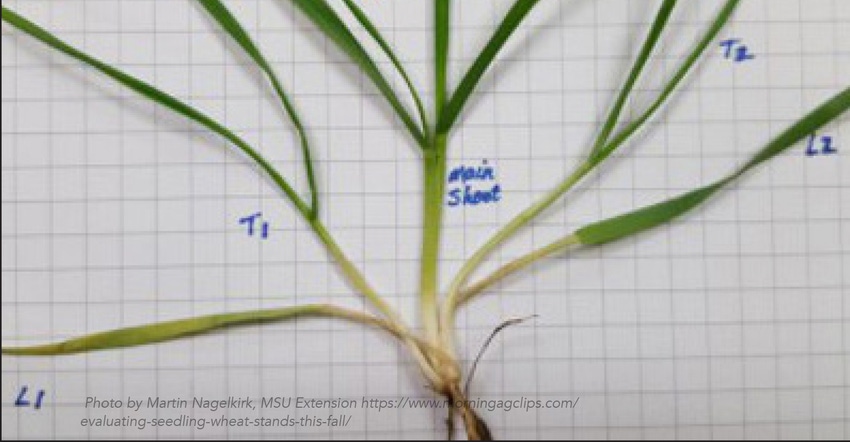
Sponsored Content
Fall planted winter wheat goes through a few stages before it breaks dormancy in the spring. Winter wheat must experience a period of cold temperatures, or it will not produce seed. Both cold acclimation and vernalization of the crop must occur for optimum yields. Cold acclimation is when the wheat goes through periods of decreased daily temperatures in the fall, after emergence. Vernalization occurs after cold acclimation is accomplished. At this stage, wheat will experience extended durations of temperatures below 40°F to induce the upcoming spring’s reproductive stage. Eventually, dormancy will be broken.
Winter wheat breaks dormancy if there is a two-week period with an average temperature of at least 41°F. As soon as the plants resume growth, you need to get back out in the field so that you can make critical decisions about nitrogen, insecticide, fungicide and most importantly, preserve yield potential.
Nitrogen (N) Management
Splitting nitrogen applications reduces risk of loss to the environment and reduces risk that the plants take up too much nitrogen at once and become rank. Rank plants are more likely to lodge.
A split application of N in the form of UAN has a six-year, $17.24/A. ROI, and 2.8 Bu./A. yield advantage over a single nitrogen application on wheat. This concept is PFR Proven and represents multi-year, multi-location data. In this study, the split applications of N occurred at Feekes 3 and Feekes 5, whereas the single N application was made at Feekes 3 only. Splitting N applications can reduce N volatility risk and provide N to the crop at different uptake timings.
Another PFR Proven practice for wheat is implementing a split application of urea instead of loading all the wheat’s N needs in one pass. This practice has six years’ worth of data backing it. Split urea applications had a 3.5 Bu./A. yield increase and a $22.13/A ROI compared to a single application.

Use tiller counts to determine necessity for early N application and rate.
Target: 70-100 tillers/ft2
Fewer than 70 tillers/ft2
Apply 50 to 60 percent of N at Feekes 3 (green-up)
Balance at Feekes 5 (stem elongation)
Greater than 70 tillers/ft2 = Target Feekes 4 to 5
See chart below for rates

Tiller counts are essential for making management decisions.
N Rates
1.2 lb. N. / Bu. Harvested
100 Bu. = 120 lb. N
80 Bu. = 96 lb. N
65 Bu. = 78 lb. N
Beck’s 6-year, multi-location PFR data shows that 96 to 109 units/A. of N is ideal.
Single Pass
Less than 70 tillers/ft2 apply in Feekes 3 (green-up)
Increased spring N loss potential!
More than 70 tillers/ft2: wait until Feekes 5 (stem elongation)
Use a nitrification inhibitor such as Agrotain Plus®, Instinct®, or Nutrisphere®
Goal is 60+ Harvestable Heads/ft2
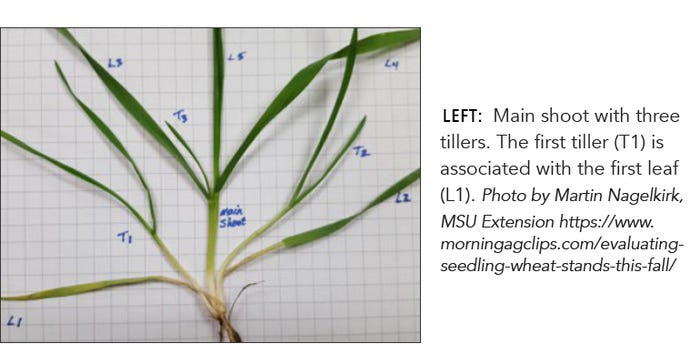
Fungicides
Wet weather during flowering increases the odds of head scab infection. Fusarium head blight, also called FHB or head scab, is a fungal disease caused by Fusarium graminearum. This fungus produces a vomitoxin (DON) in the grain. Wheat fungicides can protect the plant from fusarium head blight, head scab, powdery mildew, and various rusts. A PGR application can reduce the risk of lodging from high nitrogen (N) level remnants from the previously planted crop.
Apply fungicide during early flowering, at Feekes 10.5.1, or when more than 50 percent of plants are flowering to mitigate head scab. In most areas, flowering is a 7-to-10-day window. In general terms, it is better to spray a few days too late than to spray too early before anthers are visible. Local scab predictions are available through local extension services. A single application at Feekes 10.5.1 (flowering) provides the best protection against foliar disease and fusarium head scab.
Successful in-season management treatments – preventative sometimes being the better option over curative – can continue the foundation for a healthy yielding wheat harvest
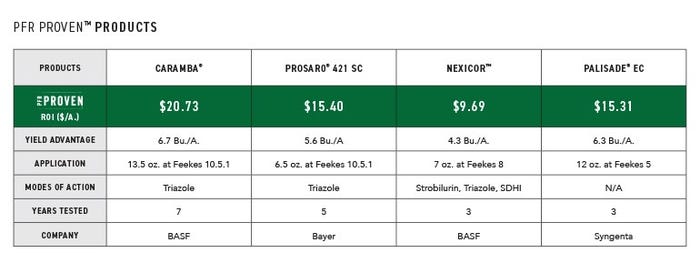
Avoid strobulirin fungicides after flowering, because their use can increase DON in grain if applied after Feekes 8.
Flowering
Flowering on each wheat head starts at the middle of the head, then moves up and down. Similarly, tillers will flower after the main head. Time your fungicide application to optimize the number of open flowers, while not waiting so long that you allow the disease to take hold.
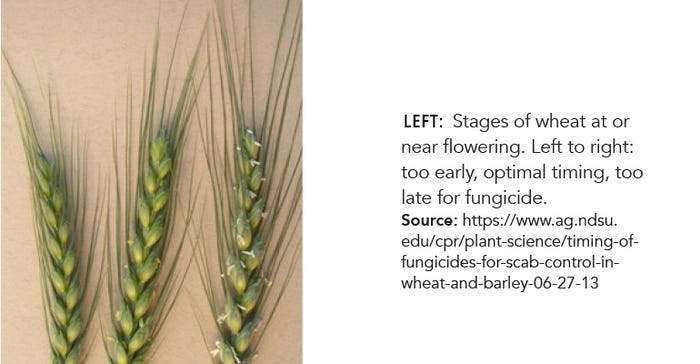
Insects
It is important to use an insecticide seed treatment like Escalate® yield enhancement system and/or a fall applied insecticide to control aphids. Direct aphid feeding via piercing-sucking mouthparts removes plant sap and damages plant health. Some aphid species (bird cherry-oat aphid in particular) also vector a viral disease called Barley Yellow Dwarf. There is no control option for the virus, so keep aphid populations low to avoid yield loss.
Aphids Can Transmit Barley Yellow Dwarf Virus When:
Temps > 48°F = aphid activity
> 10 aphids/ft. row in the winter/spring = Spray!
Armyworm feeding on the leaves typically occurs at night. In the daytime, the larvae hide in residue at the soil surface or under clods of soil.
≥ 4 armyworms / ft2 = Spray!
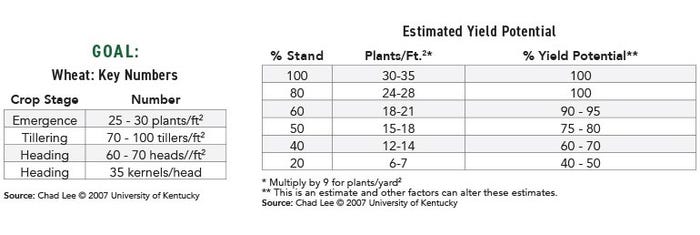
We are hopeful that the 2021 wheat harvest season could add more PFR Proven practices to our list! For more information about Beck’s PFR Wheat studies and PFR Proven products and practices, click here. Contact your local Beck’s representative for questions.
Innovation has always been at the heart of farming. Dreaming, inventing, and experimenting with new tools, equipment, and products is what allows farmers to continue improving their operations. Beck’s family of employees thrives on innovation too, which is why they developed the Practical Farm Research (PFR)® program. Today, Beck’s provides a truly comprehensive, innovative, and practical agronomic research program that helps farmers with decisions that can improve profitability. By evaluating hundreds of new management practices and inputs, we deliver unbiased agronomic data to help farmers make better decisions and increase profitability.
For a product or practice to become PFR Proven™, it needs to have been tested for a minimum of three years and, over those three years, it must provide a positive yield gain each year and average a positive return on investment over the three-year period. These are not ‘silver bullet’ products for every field on every farm but have shown consistent positive yield and return on investment results in the PFR and are a good place to start if you want to try something new on your farm.
Beck’s is the largest family-owned retail seed company in the United States that serves farmers in Arkansas, Illinois, Indiana, Iowa, Kansas, Kentucky, Michigan, Minnesota, Mississippi, Missouri, Ohio, South Dakota, Tennessee, and Wisconsin. According to a recent seed industry survey, Beck’s ranks as the third largest corn and soybean brand in the United States. At their core, all Beck’s employees are Farmers at Heart. It stands for something special. It has soul. It has truth. And it represents a community of farmers, employees, and dealers who strive each day to seek challenges, push boundaries and innovate. Beck’s has, and always will be, proud to serve a community of farmers who love what they do and who are proud to be… Farmers at Heart. For more agronomic new and information, visit Beck’s Agronomy Talk page or blog at BecksHybrids.com.
About the Author(s)
You May Also Like




